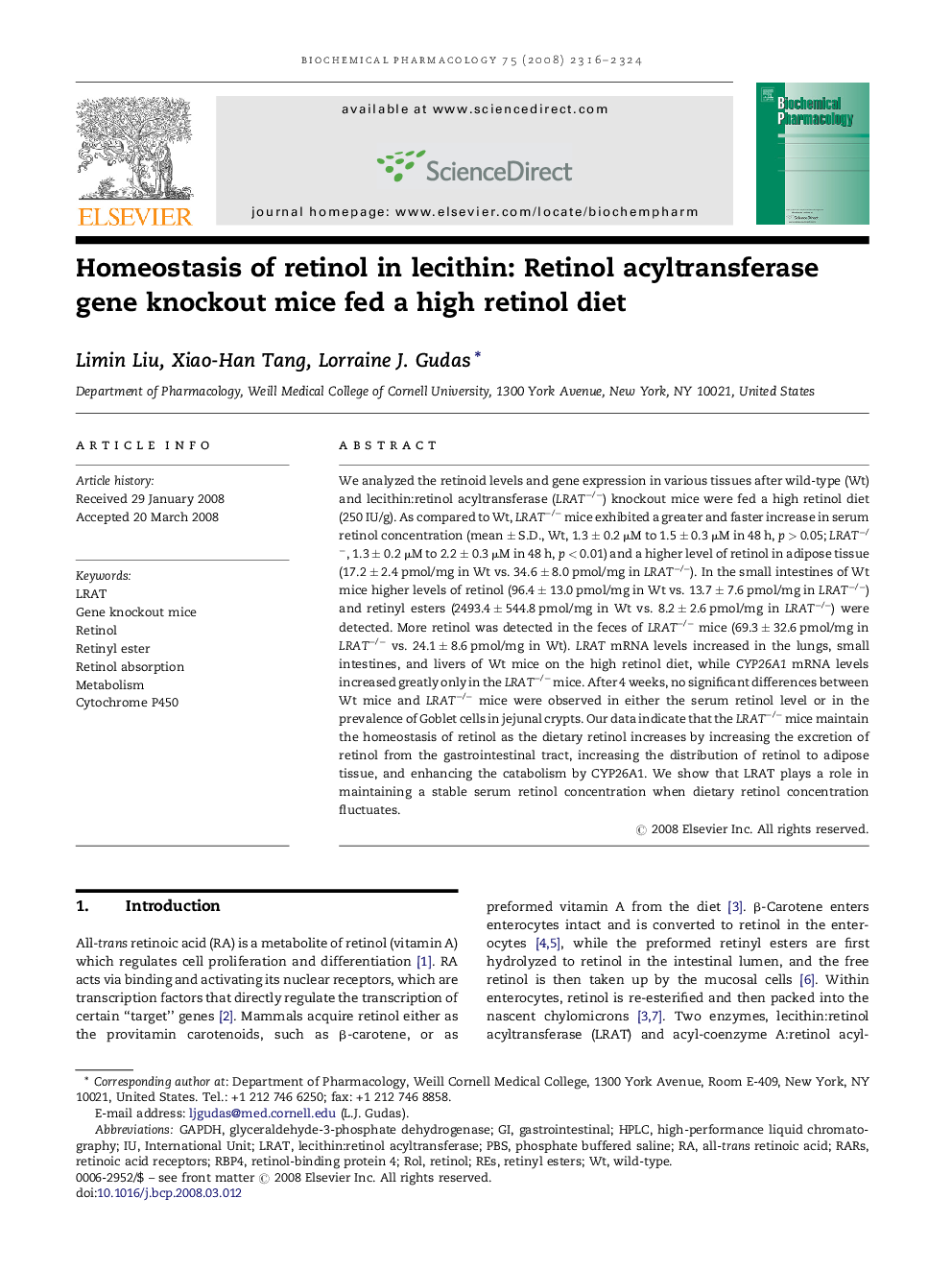| Article ID | Journal | Published Year | Pages | File Type |
|---|---|---|---|---|
| 2514223 | Biochemical Pharmacology | 2008 | 9 Pages |
We analyzed the retinoid levels and gene expression in various tissues after wild-type (Wt) and lecithin:retinol acyltransferase (LRAT−/−) knockout mice were fed a high retinol diet (250 IU/g). As compared to Wt, LRAT−/− mice exhibited a greater and faster increase in serum retinol concentration (mean ± S.D., Wt, 1.3 ± 0.2 μM to 1.5 ± 0.3 μM in 48 h, p > 0.05; LRAT−/−, 1.3 ± 0.2 μM to 2.2 ± 0.3 μM in 48 h, p < 0.01) and a higher level of retinol in adipose tissue (17.2 ± 2.4 pmol/mg in Wt vs. 34.6 ± 8.0 pmol/mg in LRAT−/−). In the small intestines of Wt mice higher levels of retinol (96.4 ± 13.0 pmol/mg in Wt vs. 13.7 ± 7.6 pmol/mg in LRAT−/−) and retinyl esters (2493.4 ± 544.8 pmol/mg in Wt vs. 8.2 ± 2.6 pmol/mg in LRAT−/−) were detected. More retinol was detected in the feces of LRAT−/− mice (69.3 ± 32.6 pmol/mg in LRAT−/− vs. 24.1 ± 8.6 pmol/mg in Wt). LRAT mRNA levels increased in the lungs, small intestines, and livers of Wt mice on the high retinol diet, while CYP26A1 mRNA levels increased greatly only in the LRAT−/− mice. After 4 weeks, no significant differences between Wt mice and LRAT−/− mice were observed in either the serum retinol level or in the prevalence of Goblet cells in jejunal crypts. Our data indicate that the LRAT−/− mice maintain the homeostasis of retinol as the dietary retinol increases by increasing the excretion of retinol from the gastrointestinal tract, increasing the distribution of retinol to adipose tissue, and enhancing the catabolism by CYP26A1. We show that LRAT plays a role in maintaining a stable serum retinol concentration when dietary retinol concentration fluctuates.
